SEO
Lead Generation: How To Get Started

Today’s consumers have an almost limitless amount of information at their fingertips. Podcasts, videos, blog posts, and social media – are just a few of the sources that can drive them toward one brand over another.
If it’s your job to attract these potential customers, you know the struggles of generating high-quality leads.
In this piece, we’ll take a closer look at lead generation, discussing the different types of leads you could attract and providing some strategies and examples for lead gen that you can put to use right away.
What Is Lead Generation?
Lead generation is a marketing process of capturing potential consumers who show interest in your product or service.
The goal is to connect with people early in the buying process, earn their trust and build a relationship so that, when they’re ready to make a purchase, they buy from you.
But lead generation also serves secondary objectives, including building brand awareness, collecting customer data, and fostering brand loyalty.
With this in mind, it’s important to remember that not everyone who visits your store or website is a lead.
That’s why successful lead gen goes after specific targets, using a variety of platforms and strategies including:
- Landing pages – Using a tracking pixel, landing pages collect information about visitors you can later use to target them for sales.
- Email – Email is a great lead generation tool because the recipients will have opted in, which means they’re already familiar with your brand.
- Social media – With unmatched opportunities for engagement, your social media accounts are a great way to encourage your targets to take action.
- Blogs – A great way to establish authority and provide value, blogs are also a great place to promote specific offers.
- Live events – When it comes to qualifying leads, live events are a great way to meet your target audience and quickly identify the ones more likely to make a purchase.
- Coupons and other promotions – Offering a discount or free item is a great way to encourage targets to provide their contact information.
What will ultimately work best for you will depend on your niche and your audience.
As you experiment with different lead generation strategies, you may find one more successful than the others. This means you should probably make that channel your priority, whereas others may not be of any use at all.
But we’ll get to all that later.
First, let’s talk about leads.
The Different Types Of Leads
Sales is the engine that drives any business. Without sales, there’s no revenue. Without revenue, there’s no business. So, it’s kind of important.
But it’s a massive field. The approach a medical monitoring sensor salesperson takes is going to be very different from a used car salesman.
But both of them – and every other sales professional for that matter – have one thing in common: they need to spend most of their time pursuing the people who are most likely to buy.
In general, leads fall into seven categories:
- Hot Leads – These leads are ready to convert. They are qualified and interested in your offering, and are the most likely to convert to a sale. For example, this might be the purchasing director who has had several conversations with you and received a product demo. They have purchasing authority and a timeline.
- Cold Leads – These are potential customers who may be unfamiliar with your brand or offering. As of yet, they have shown no interest in what you’re selling. Generally speaking, these are the hardest leads to convert to sales.
- Warm Leads – A middle ground between the two previous types of leads, these are people who are familiar with who you are and what you offer. They’re the type who watch your videos or read your blogs, but haven’t contacted you directly. Your goal is to warm them up into hot leads.
- Information Qualified Leads (IQLs) – This is the kind of lead who has already shown some interest in your company and has followed a call to action. Maybe they signed up for your email newsletter or filled out a lead generation form. They are often looking for more information and will react positively to a nurturing campaign.
- Marketing Qualified Leads (MQLs) – MQLs are one step further down the pipeline from IQLs. They are actively searching for a solution that fits their needs, and are trying to discover if yours is the right fit. These are the types of leads who will download your whitepapers, watch your videos, and attend your corporate seminars.
- Sales Ready Leads (SRLs) – Sometimes called “accepted leads,” these are the bottom-of-the-funnel leads who are almost ready to pull the trigger on a purchase. It’s important to understand their budgets, purchasing authority, needs, and timeframe.
- Sales Qualified Leads (SQLs) – These leads are ready to buy and should be in communication with your sales team. They are considered very hot, however, you should be aware that they are likely still considering some of your competitors.
The Lead Generation Process
As you have probably gathered by this point, lead generation is a multiple-step process.
Yours will vary, depending on whether you’re focusing on inbound or outbound generation – but both should follow a similar pathway.
Step 1: Do Your Research
Before you start trying to collect leads, you need to gather as much information as possible about your target audience. You want to know not just who they are, but where they live, what’s important to them, and most importantly, what their pain points are, particularly those that are the most pressing.
It’s often a good idea to create customer personas, in which you define the demographics, budget, and needs of typical customers. You may want to consider social habits, professional experience, and even psychological traits.
Once you know who you’re going after, it’s time to identify where they are. Are they active on Facebook, or more likely to respond to an email? Again, this will vary depending on your specific circumstances.
This is also the stage where you should check out the competition. What are they doing? What differentiates your offering from theirs? And most importantly, why is it better?
Step 2: Create Great Content
By now, you should know what needs your offering fills for your potential customers. Use this information to create content that solves it.
Your choice of medium will affect your content format. For example, videos work great on social media, but you can’t embed them in an email.
Likewise, if you’re going after your target audience on Twitter, your lengthy blogs are going to need to be linked to, or at the very least truncated.
Never forget your focus is on adding value. Each piece of content you create should serve a specific purpose, whether that’s educating your audience about your offering, building brand awareness or promoting a sale.
Step 3: Develop A Lead Generation Database
You can have the hottest leads on the planet, but they won’t do you a bit of good if you don’t handle them the right way.
You should create and use a lead database where you can record, study, filter, and segment your potential customers.
Ideally, you’ll want to get an automated CRM system to dramatically reduce the labor involved with this.
Most of these will allow you to tag leads based on the type and how hot they are. This allows your sales team to work through their lists in a more efficient manner, dedicating the most attention to those with the biggest chance of converting.
Step 4: Qualify And Score Leads
Not all leads are going to be in the same place in the sales funnel. Some will be ready to buy today, while others may just be getting an idea of what’s out there.
You need to adjust your approach based on this.
Most companies use a lead scoring system of 1-100, which indicates approximately where the lead is in the customer journey. They are assigned points based on their actions, with more serious actions resulting in more points.
For example, following your Facebook page could be worth 10 points, filling out a “Request a demo” form might be worth 20, and opening and reading an email could be 5. If a lead does all three of these, their lead score would be 35.
These numbers will give you a general idea of where they are from the following stages:
- New leads, who have just made initial contact.
- Working leads, with whom you have had contact and initiated a conversation.
- Nurturing leads, who are not interested in buying right now, but might in the future.
- Unqualified leads, who are not interested in your offering. These are sometimes called “dead leads.”
- Qualified leads, or those who want to do business with you.
Obviously, you should focus more time and energy on the leads that have a higher probability of converting.
Lead Generation Strategies And Examples
The ways you can generate leads are practically endless, but in this section, we’ll discuss some of the more common strategies you can employ, plus give you examples of them at work.
Content Marketing
Content marketing is the practice of creating engaging and informative content that provides value for leads and customers, thereby generating interest in a business.
This can span both traditional and digital marketing, and is an important part of any successful marketing strategy. It can include things like newsletters, podcasts, videos, and social media.
You can use content marketing for any stage of the sales funnel, from growing brand awareness with timely blogs, creating demand or demonstrating thought leadership with white papers, driving organic traffic via SEO, building trust, and earning customer loyalty.
To make the most of yours, offer many opt-in opportunities and make them more enticing by adding discounts, guides, or something of value in exchange.
Email Marketing
Email remains a popular choice for lead generation for a good reason: it works.
A study by Mailchimp found 22.71% of marketing emails were opened, with some industries seeing even higher rates.
Whether you’re sending out a monthly newsletter or a cold outreach email to a potential prospect, email remains one of your best bets for generating new leads.
One of the more cost-effective means of generating leads, email marketing also allows you to segment your targets with customized content that promotes maximum engagement.
Another reason email marketing is a favorite for so many organizations is that it provides incredible opportunities for tracking. A quality CRM will give you a lot of useful data, including open rate, engagement time, and subscriber retention, allowing you to fine-tune your campaigns.
Social Media Marketing
Almost everyone is on social media these days, which makes it the ideal place to hunt down leads.
Social media platforms not only allow you to directly interact with your followers, but they also let you create advertising targeted at highly specific audiences.
Interaction is simplified thanks to multiple user-friendly CTAs like Instagram Stories’ skip option and truncated URLs on Twitter.
Social media is also a great place to run contests or share gated content.
You can use paid ads like the one above to target new leads, share content that will generate them organically, or ideally, a mix of both.
Coupons, Discounts, And Free Trials
If you’re like many people, you may be reluctant to provide your email address to businesses in case they start spamming your inbox.
As a business, however, this can be a problem.
The way to overcome this trepidation is to offer people something of value in return for their contact information.
A risk-free trial or discount code is a powerful tool for overcoming sales barriers. And once a target has tried your offering, you can retarget them with additional offers to encourage a sale.
Give them a free gift, offer a coupon, or allow them to take your product for a test drive, and you’ll find many more people willing to give you their info.
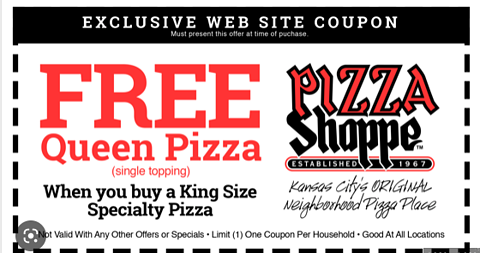 Screenshot from author, January 2023
Screenshot from author, January 2023Online Ads
Display advertisements are videos and images that pop up as you’re browsing websites, apps, and social media.
They, along with paid search and PPC, are a great way to reach your intended customers where they are.
Display ads are particularly useful for targeting leads across the buyers’ journey, as well as promoting awareness and sales, promotions, or new products.
 Screenshot from Google, January 2023
Screenshot from Google, January 2023Remarketing ads are a great way to reengage leads who have stopped short of a purchase, while non-intrusive native ads are perfect for extending your content marketing efforts.
Referral Marketing
A great way to find new leads is to let your existing customers find them for you. Encourage them to write reviews or recommend friends in return for a discount or something else of value.
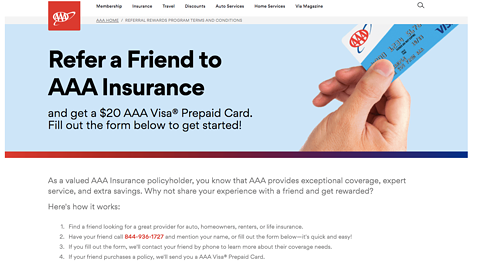 Image from AAA Insurance, January 2023
Image from AAA Insurance, January 2023This is an excellent way to fill your funnel of leads – and make more sales. Referrals and online reviews give you an authenticity and trust level that no in-house marketing campaign can ever duplicate.
Did you know that when shopping online, more than 99.9% of people read reviews? Or that 94% of consumers acknowledged positive reviews made them more likely to support a business? And that’s not even including the power of personal recommendations from friends and family.
Referral marketing is a great tool for lead generation because it presents your brand in a positive light to more people.
Best Practices For Lead Generation
To ensure you’re getting the most out of your lead generation efforts, keep these tips in mind:
Use Your Data
You likely have a lot of information about leads and the types of strategies that work for them already at your fingertips.
Gather yours by looking at previous pieces that have worked well, whether it’s blogs that get a lot of reads, emails that have a high open-rate, or display ads that bring in a lot of traffic.
Look for general themes or things you did differently on high-performers. This will give you insight into the kind of things that resonate with your audience.
Be Consistent With Messaging
Make sure it’s very obvious to any web visitor or email recipient what action they should take next. Offer them a reason to click your links and keep your messaging clear and consistent.
You should maintain the same tone of voice across channels as you move prospects through the sales funnel. Remember, you’re not just interested in capturing data – you’re trying to create a customer.
A/B Testing
Every marketer knows the importance of testing different versions of collateral. This is because, no matter how well something is performing, it could always do better.
You should experiment with different headlines, images, body copy, etc.
Just remember to only test one aspect at once, lest you miss which change made a difference.
And again, don’t forget the opt-ins.
Use The Power Of CRM Technology
To ensure your sales and marketing teams are operating as efficiently as possible, but a lead generation platform to work for you.
The right tool can help you gather information about your targets, monitor their behavior on your website and identify what’s driving them to you.
Armed with this data, you can then optimize your pages and campaigns to better target your audience.
Create Enticing Offers At Every Stage
People at different stages of the purchasing journey want different things.
Someone who is just curious about seeing what’s out there isn’t likely to respond to a free demo offer, but someone who is further along the funnel might.
Make sure you’re offering something for every buying stage and that you have clear CTAs throughout your materials.
Integrate Social Media
Social media is the ideal platform for initiating conversations and interactions with leads at all stages.
While many marketers typically think of it as primarily for top-of-funnel targeting, by strategically using proven offers and other things of value, you can also go after those leads who are closer to making a purchase.
Clean Up Your Landing Pages
Users want information presented to them in a clean, easy-to-understand manner. No one is trying to read “War and Peace” to find a new vending machine supplier.
Put your important information at the top, and make it clear where visitors can input their information to contact you or get content.
Use Your Partners
Co-marketing is a great way to generate new leads because it allows you to piggyback on the efforts of partner companies.
Create mutually beneficial offers and you’ll spend the word about your brand to a larger audience, which will attract new leads.
Bring Your Sales Team In
Marketers prime the pump, but sales drives the action. Make sure to loop your sales team into the lead generation process early and often.
They will likely have personal insight into what works best to move targets along the purchasing path.
This will also ensure you remain on the same page as far as what terms mean.
Remarket, Remarket, Remarket
Almost no one makes a purchase on first contact, particularly in B2B sales. That makes remarketing an important arrow for your quiver.
It helps turn bouncers into leads and abandoners into customers – and it amplifies all your other marketing activities.
Make Lead Generation A Priority
No one ever said it was easy to find, score, and qualify leads, but it’s an important part of ensuring the growth and financial health of your business.
Nurturing customers and potential customers is hard work. But without it, you’ll struggle to make new sales.
This piece only covered lead generation from a high level, but hopefully, it has equipped you with some strategies you can employ to attract new leads and nurture existing ones.
If you only take a single thing away from this make it this: Put most of your efforts into higher-quality leads, because they’re the ones who are most likely to make a purchase.
And remember – lead generation is an ongoing process. You’re not going to see results overnight, but if you put in the work, you’ll start to generate the results you want.
Happy hunting.
More resources:
Featured Image: Andrey_Popov/Shutterstock
SEO
Reddit Post Ranks On Google In 5 Minutes

Google’s Danny Sullivan disputed the assertions made in a Reddit discussion that Google is showing a preference for Reddit in the search results. But a Redditor’s example proves that it’s possible for a Reddit post to rank in the top ten of the search results within minutes and to actually improve rankings to position #2 a week later.
Discussion About Google Showing Preference To Reddit
A Redditor (gronetwork) complained that Google is sending so many visitors to Reddit that the server is struggling with the load and shared an example that proved that it can only take minutes for a Reddit post to rank in the top ten.
That post was part of a 79 post Reddit thread where many in the r/SEO subreddit were complaining about Google allegedly giving too much preference to Reddit over legit sites.
The person who did the test (gronetwork) wrote:
“…The website is already cracking (server down, double posts, comments not showing) because there are too many visitors.
…It only takes few minutes (you can test it) for a post on Reddit to appear in the top ten results of Google with keywords related to the post’s title… (while I have to wait months for an article on my site to be referenced). Do the math, the whole world is going to spam here. The loop is completed.”
Reddit Post Ranked Within Minutes
Another Redditor asked if they had tested if it takes “a few minutes” to rank in the top ten and gronetwork answered that they had tested it with a post titled, Google SGE Review.
gronetwork posted:
“Yes, I have created for example a post named “Google SGE Review” previously. After less than 5 minutes it was ranked 8th for Google SGE Review (no quotes). Just after Washingtonpost.com, 6 authoritative SEO websites and Google.com’s overview page for SGE (Search Generative Experience). It is ranked third for SGE Review.”
It’s true, not only does that specific post (Google SGE Review) rank in the top 10, the post started out in position 8 and it actually improved ranking, currently listed beneath the number one result for the search query “SGE Review”.
Screenshot Of Reddit Post That Ranked Within Minutes
Anecdotes Versus Anecdotes
Okay, the above is just one anecdote. But it’s a heck of an anecdote because it proves that it’s possible for a Reddit post to rank within minutes and get stuck in the top of the search results over other possibly more authoritative websites.
hankschrader79 shared that Reddit posts outrank Toyota Tacoma forums for a phrase related to mods for that truck.
Google’s Danny Sullivan responded to that post and the entire discussion to dispute that Reddit is not always prioritized over other forums.
Danny wrote:
“Reddit is not always prioritized over other forums. [super vhs to mac adapter] I did this week, it goes Apple Support Community, MacRumors Forum and further down, there’s Reddit. I also did [kumo cloud not working setup 5ghz] recently (it’s a nightmare) and it was the Netgear community, the SmartThings Community, GreenBuildingAdvisor before Reddit. Related to that was [disable 5g airport] which has Apple Support Community above Reddit. [how to open an 8 track tape] — really, it was the YouTube videos that helped me most, but it’s the Tapeheads community that comes before Reddit.
In your example for [toyota tacoma], I don’t even get Reddit in the top results. I get Toyota, Car & Driver, Wikipedia, Toyota again, three YouTube videos from different creators (not Toyota), Edmunds, a Top Stories unit. No Reddit, which doesn’t really support the notion of always wanting to drive traffic just to Reddit.
If I guess at the more specific query you might have done, maybe [overland mods for toyota tacoma], I get a YouTube video first, then Reddit, then Tacoma World at third — not near the bottom. So yes, Reddit is higher for that query — but it’s not first. It’s also not always first. And sometimes, it’s not even showing at all.”
hankschrader79 conceded that they were generalizing when they wrote that Google always prioritized Reddit. But they also insisted that that didn’t diminish what they said is a fact that Google’s “prioritization” forum content has benefitted Reddit more than actual forums.
Why Is The Reddit Post Ranked So High?
It’s possible that Google “tested” that Reddit post in position 8 within minutes and that user interaction signals indicated to Google’s algorithms that users prefer to see that Reddit post. If that’s the case then it’s not a matter of Google showing preference to Reddit post but rather it’s users that are showing the preference and the algorithm is responding to those preferences.
Nevertheless, an argument can be made that user preferences for Reddit can be a manifestation of Familiarity Bias. Familiarity Bias is when people show a preference for things that are familiar to them. If a person is familiar with a brand because of all the advertising they were exposed to then they may show a bias for the brand products over unfamiliar brands.
Users who are familiar with Reddit may choose Reddit because they don’t know the other sites in the search results or because they have a bias that Google ranks spammy and optimized websites and feel safer reading Reddit.
Google may be picking up on those user interaction signals that indicate a preference and satisfaction with the Reddit results but those results may simply be biases and not an indication that Reddit is trustworthy and authoritative.
Is Reddit Benefiting From A Self-Reinforcing Feedback Loop?
It may very well be that Google’s decision to prioritize user generated content may have started a self-reinforcing pattern that draws users in to Reddit through the search results and because the answers seem plausible those users start to prefer Reddit results. When they’re exposed to more Reddit posts their familiarity bias kicks in and they start to show a preference for Reddit. So what could be happening is that the users and Google’s algorithm are creating a self-reinforcing feedback loop.
Is it possible that Google’s decision to show more user generated content has kicked off a cycle where more users are exposed to Reddit which then feeds back into Google’s algorithm which in turn increases Reddit visibility, regardless of lack of expertise and authoritativeness?
Featured Image by Shutterstock/Kues
SEO
WordPress Releases A Performance Plugin For “Near-Instant Load Times”

WordPress released an official plugin that adds support for a cutting edge technology called speculative loading that can help boost site performance and improve the user experience for site visitors.
Speculative Loading
Rendering means constructing the entire webpage so that it instantly displays (rendering). When your browser downloads the HTML, images, and other resources and puts it together into a webpage, that’s rendering. Prerendering is putting that webpage together (rendering it) in the background.
What this plugin does is to enable the browser to prerender the entire webpage that a user might navigate to next. The plugin does that by anticipating which webpage the user might navigate to based on where they are hovering.
Chrome lists a preference for only prerendering when there is an at least 80% probability of a user navigating to another webpage. The official Chrome support page for prerendering explains:
“Pages should only be prerendered when there is a high probability the page will be loaded by the user. This is why the Chrome address bar prerendering options only happen when there is such a high probability (greater than 80% of the time).
There is also a caveat in that same developer page that prerendering may not happen based on user settings, memory usage and other scenarios (more details below about how analytics handles prerendering).
The Speculative Loading API solves a problem that previous solutions could not because in the past they were simply prefetching resources like JavaScript and CSS but not actually prerendering the entire webpage.
The official WordPress announcement explains it like this:
Introducing the Speculation Rules API
The Speculation Rules API is a new web API that solves the above problems. It allows defining rules to dynamically prefetch and/or prerender URLs of certain structure based on user interaction, in JSON syntax—or in other words, speculatively preload those URLs before the navigation. This API can be used, for example, to prerender any links on a page whenever the user hovers over them.”
The official WordPress page about this new functionality describes it:
“The Speculation Rules API is a new web API… It allows defining rules to dynamically prefetch and/or prerender URLs of certain structure based on user interaction, in JSON syntax—or in other words, speculatively preload those URLs before the navigation.
This API can be used, for example, to prerender any links on a page whenever the user hovers over them. Also, with the Speculation Rules API, “prerender” actually means to prerender the entire page, including running JavaScript. This can lead to near-instant load times once the user clicks on the link as the page would have most likely already been loaded in its entirety. However that is only one of the possible configurations.”
The new WordPress plugin adds support for the Speculation Rules API. The Mozilla developer pages, a great resource for HTML technical understanding describes it like this:
“The Speculation Rules API is designed to improve performance for future navigations. It targets document URLs rather than specific resource files, and so makes sense for multi-page applications (MPAs) rather than single-page applications (SPAs).
The Speculation Rules API provides an alternative to the widely-available <link rel=”prefetch”> feature and is designed to supersede the Chrome-only deprecated <link rel=”prerender”> feature. It provides many improvements over these technologies, along with a more expressive, configurable syntax for specifying which documents should be prefetched or prerendered.”
See also: Are Websites Getting Faster? New Data Reveals Mixed Results
Performance Lab Plugin
The new plugin was developed by the official WordPress performance team which occasionally rolls out new plugins for users to test ahead of possible inclusion into the actual WordPress core. So it’s a good opportunity to be first to try out new performance technologies.
The new WordPress plugin is by default set to prerender “WordPress frontend URLs” which are pages, posts, and archive pages. How it works can be fine-tuned under the settings:
Settings > Reading > Speculative Loading
Browser Compatibility
The Speculative API is supported by Chrome 108 however the specific rules used by the new plugin require Chrome 121 or higher. Chrome 121 was released in early 2024.
Browsers that do not support will simply ignore the plugin and will have no effect on the user experience.
Check out the new Speculative Loading WordPress plugin developed by the official core WordPress performance team.
How Analytics Handles Prerendering
A WordPress developer commented with a question asking how Analytics would handle prerendering and someone else answered that it’s up to the Analytics provider to detect a prerender and not count it as a page load or site visit.
Fortunately both Google Analytics and Google Publisher Tags (GPT) both are able to handle prerenders. The Chrome developers support page has a note about how analytics handles prerendering:
“Google Analytics handles prerender by delaying until activation by default as of September 2023, and Google Publisher Tag (GPT) made a similar change to delay triggering advertisements until activation as of November 2023.”
Possible Conflict With Ad Blocker Extensions
There are a couple things to be aware of about this plugin, aside from the fact that it’s an experimental feature that requires Chrome 121 or higher.
A comment by a WordPress plugin developer that this feature may not work with browsers that are using the uBlock Origin ad blocking browser extension.
Download the plugin:
Speculative Loading Plugin by the WordPress Performance Team
Read the announcement at WordPress
Speculative Loading in WordPress
See also: WordPress, Wix & Squarespace Show Best CWV Rate Of Improvement
SEO
10 Paid Search & PPC Planning Best Practices
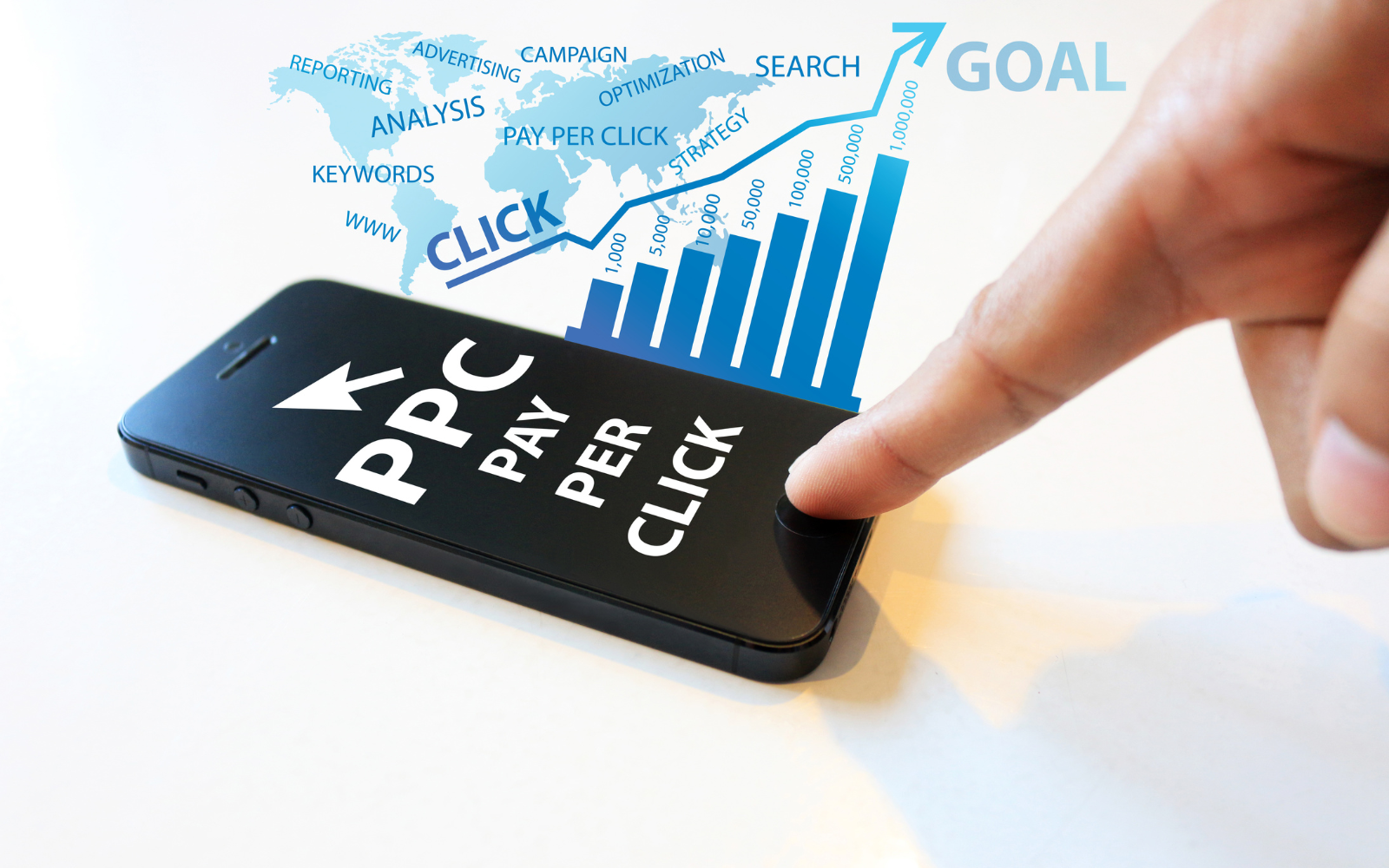
Whether you are new to paid media or reevaluating your efforts, it’s critical to review your performance and best practices for your overall PPC marketing program, accounts, and campaigns.
Revisiting your paid media plan is an opportunity to ensure your strategy aligns with your current goals.
Reviewing best practices for pay-per-click is also a great way to keep up with trends and improve performance with newly released ad technologies.
As you review, you’ll find new strategies and features to incorporate into your paid search program, too.
Here are 10 PPC best practices to help you adjust and plan for the months ahead.
1. Goals
When planning, it is best practice to define goals for the overall marketing program, ad platforms, and at the campaign level.
Defining primary and secondary goals guides the entire PPC program. For example, your primary conversion may be to generate leads from your ads.
You’ll also want to look at secondary goals, such as brand awareness that is higher in the sales funnel and can drive interest to ultimately get the sales lead-in.
2. Budget Review & Optimization
Some advertisers get stuck in a rut and forget to review and reevaluate the distribution of their paid media budgets.
To best utilize budgets, consider the following:
- Reconcile your planned vs. spend for each account or campaign on a regular basis. Depending on the budget size, monthly, quarterly, or semiannually will work as long as you can hit budget numbers.
- Determine if there are any campaigns that should be eliminated at this time to free up the budget for other campaigns.
- Is there additional traffic available to capture and grow results for successful campaigns? The ad platforms often include a tool that will provide an estimated daily budget with clicks and costs. This is just an estimate to show more click potential if you are interested.
- If other paid media channels perform mediocrely, does it make sense to shift those budgets to another?
- For the overall paid search and paid social budget, can your company invest more in the positive campaign results?
3. Consider New Ad Platforms
If you can shift or increase your budgets, why not test out a new ad platform? Knowing your audience and where they spend time online will help inform your decision when choosing ad platforms.
Go beyond your comfort zone in Google, Microsoft, and Meta Ads.
Here are a few other advertising platforms to consider testing:
- LinkedIn: Most appropriate for professional and business targeting. LinkedIn audiences can also be reached through Microsoft Ads.
- TikTok: Younger Gen Z audience (16 to 24), video.
- Pinterest: Products, services, and consumer goods with a female-focused target.
- Snapchat: Younger demographic (13 to 35), video ads, app installs, filters, lenses.
Need more detailed information and even more ideas? Read more about the 5 Best Google Ads Alternatives.
4. Top Topics in Google Ads & Microsoft Ads
Recently, trends in search and social ad platforms have presented opportunities to connect with prospects more precisely, creatively, and effectively.
Don’t overlook newer targeting and campaign types you may not have tried yet.
- Video: Incorporating video into your PPC accounts takes some planning for the goals, ad creative, targeting, and ad types. There is a lot of opportunity here as you can simply include video in responsive display ads or get in-depth in YouTube targeting.
- Performance Max: This automated campaign type serves across all of Google’s ad inventory. Microsoft Ads recently released PMAX so you can plan for consistency in campaign types across platforms. Do you want to allocate budget to PMax campaigns? Learn more about how PMax compares to search.
- Automation: While AI can’t replace human strategy and creativity, it can help manage your campaigns more easily. During planning, identify which elements you want to automate, such as automatically created assets and/or how to successfully guide the AI in the Performance Max campaigns.
While exploring new features, check out some hidden PPC features you probably don’t know about.
5. Revisit Keywords
The role of keywords has evolved over the past several years with match types being less precise and loosening up to consider searcher intent.
For example, [exact match] keywords previously would literally match with the exact keyword search query. Now, ads can be triggered by search queries with the same meaning or intent.
A great planning exercise is to lay out keyword groups and evaluate if they are still accurately representing your brand and product/service.
Review search term queries triggering ads to discover trends and behavior you may not have considered. It’s possible this has impacted performance and conversions over time.
Critical to your strategy:
- Review the current keyword rules and determine if this may impact your account in terms of close variants or shifts in traffic volume.
- Brush up on how keywords work in each platform because the differences really matter!
- Review search term reports more frequently for irrelevant keywords that may pop up from match type changes. Incorporate these into match type changes or negative keywords lists as appropriate.
6. Revisit Your Audiences
Review the audiences you selected in the past, especially given so many campaign types that are intent-driven.
Automated features that expand your audience could be helpful, but keep an eye out for performance metrics and behavior on-site post-click.
Remember, an audience is simply a list of users who are grouped together by interests or behavior online.
Therefore, there are unlimited ways to mix and match those audiences and target per the sales funnel.
Here are a few opportunities to explore and test:
- LinkedIn user targeting: Besides LinkedIn, this can be found exclusively in Microsoft Ads.
- Detailed Demographics: Marital status, parental status, home ownership, education, household income.
- In-market and custom intent: Searches and online behavior signaling buying cues.
- Remarketing: Advertisers website visitors, interactions with ads, and video/ YouTube.
Note: This varies per the campaign type and seems to be updated frequently, so make this a regular check-point in your campaign management for all platforms.
7. Organize Data Sources
You will likely be running campaigns on different platforms with combinations of search, display, video, etc.
Looking back at your goals, what is the important data, and which platforms will you use to review and report? Can you get the majority of data in one analytics platform to compare and share?
Millions of companies use Google Analytics, which is a good option for centralized viewing of advertising performance, website behavior, and conversions.
8. Reevaluate How You Report
Have you been using the same performance report for years?
It’s time to reevaluate your essential PPC key metrics and replace or add that data to your reports.
There are two great resources to kick off this exercise:
Your objectives in reevaluating the reporting are:
- Are we still using this data? Is it still relevant?
- Is the data we are viewing actionable?
- What new metrics should we consider adding we haven’t thought about?
- How often do we need to see this data?
- Do the stakeholders receiving the report understand what they are looking at (aka data visualization)?
Adding new data should be purposeful, actionable, and helpful in making decisions for the marketing plan. It’s also helpful to decide what type of data is good to see as “deep dives” as needed.
9. Consider Using Scripts
The current ad platforms have plenty of AI recommendations and automated rules, and there is no shortage of third-party tools that can help with optimizations.
Scripts is another method for advertisers with large accounts or some scripting skills to automate report generation and repetitive tasks in their Google Ads accounts.
Navigating the world of scripts can seem overwhelming, but a good place to start is a post here on Search Engine Journal that provides use cases and resources to get started with scripts.
Luckily, you don’t need a Ph.D. in computer science — there are plenty of resources online with free or templated scripts.
10. Seek Collaboration
Another effective planning tactic is to seek out friendly resources and second opinions.
Much of the skill and science of PPC management is unique to the individual or agency, so there is no shortage of ideas to share between you.
You can visit the Paid Search Association, a resource for paid ad managers worldwide, to make new connections and find industry events.
Preparing For Paid Media Success
Strategies should be based on clear and measurable business goals. Then, you can evaluate the current status of your campaigns based on those new targets.
Your paid media strategy should also be built with an eye for both past performance and future opportunities. Look backward and reevaluate your existing assumptions and systems while investigating new platforms, topics, audiences, and technologies.
Also, stay current with trends and keep learning. Check out ebooks, social media experts, and industry publications for resources and motivational tips.
More resources:
Featured Image: Vanatchanan/Shutterstock
-

 WORDPRESS6 days ago
WORDPRESS6 days ago10 WordPress Influencers to Follow in 2024 – WordPress.com News
-
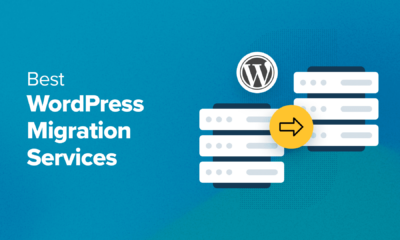
 WORDPRESS7 days ago
WORDPRESS7 days ago8 Best WordPress Migration Services (Compared)
-
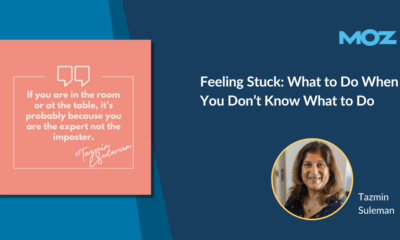
 MARKETING6 days ago
MARKETING6 days agoFeeling Stuck: What to Do When You Don’t Know What to Do
-

 SEARCHENGINES6 days ago
SEARCHENGINES6 days agoGoogle Image Search Adds Pixel Level Object Segmentation Animation
-

 PPC5 days ago
PPC5 days agoA History of Google AdWords and Google Ads: Revolutionizing Digital Advertising & Marketing Since 2000
-

 SEARCHENGINES5 days ago
SEARCHENGINES5 days agoMore Google March 2024 Core Update Ranking Volatility
-

 PPC5 days ago
PPC5 days agoCompetitor Monitoring: 7 ways to keep watch on the competition
-

 PPC5 days ago
PPC5 days ago31 Ready-to-Go Mother’s Day Messages for Social Media, Email, & More















You must be logged in to post a comment Login